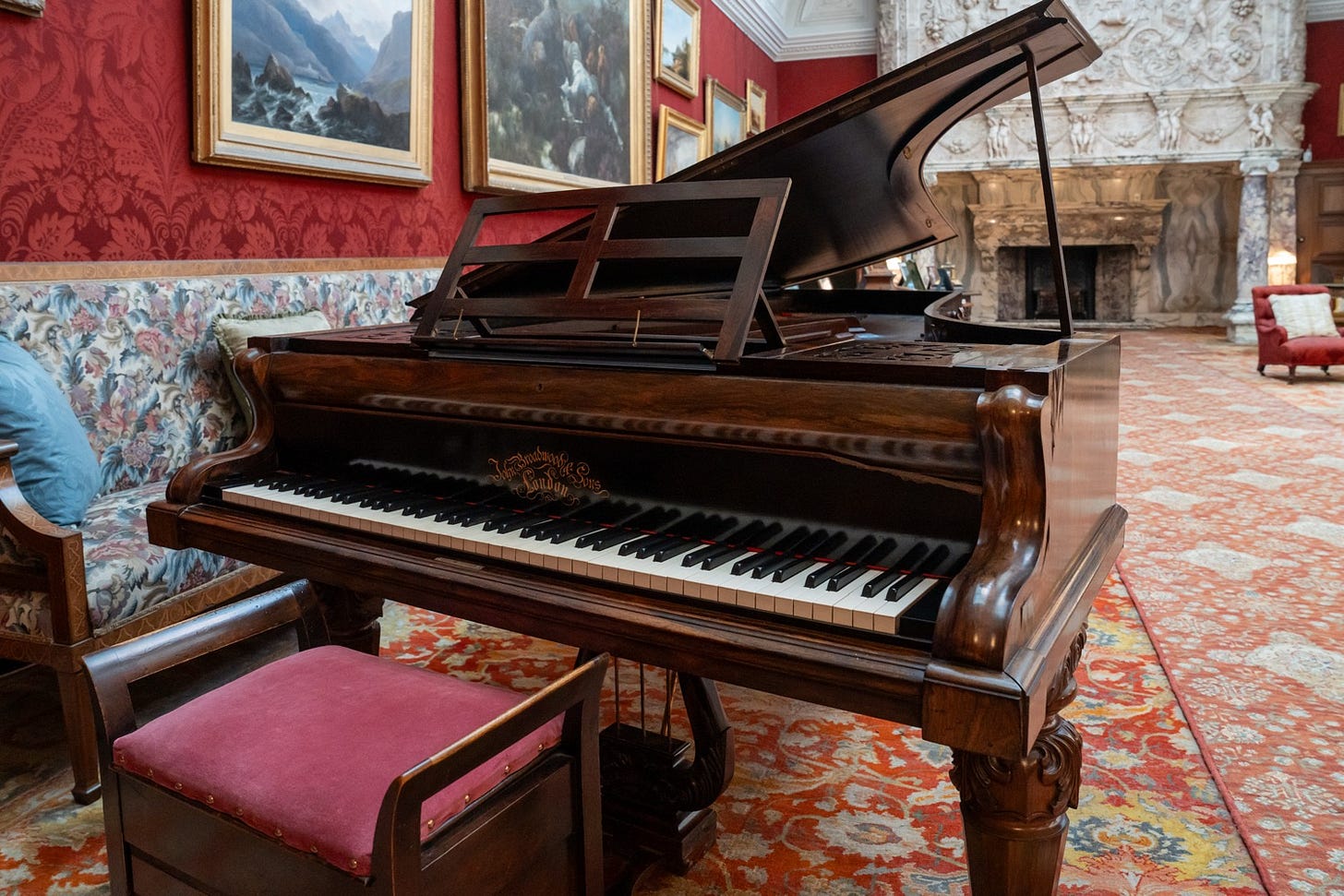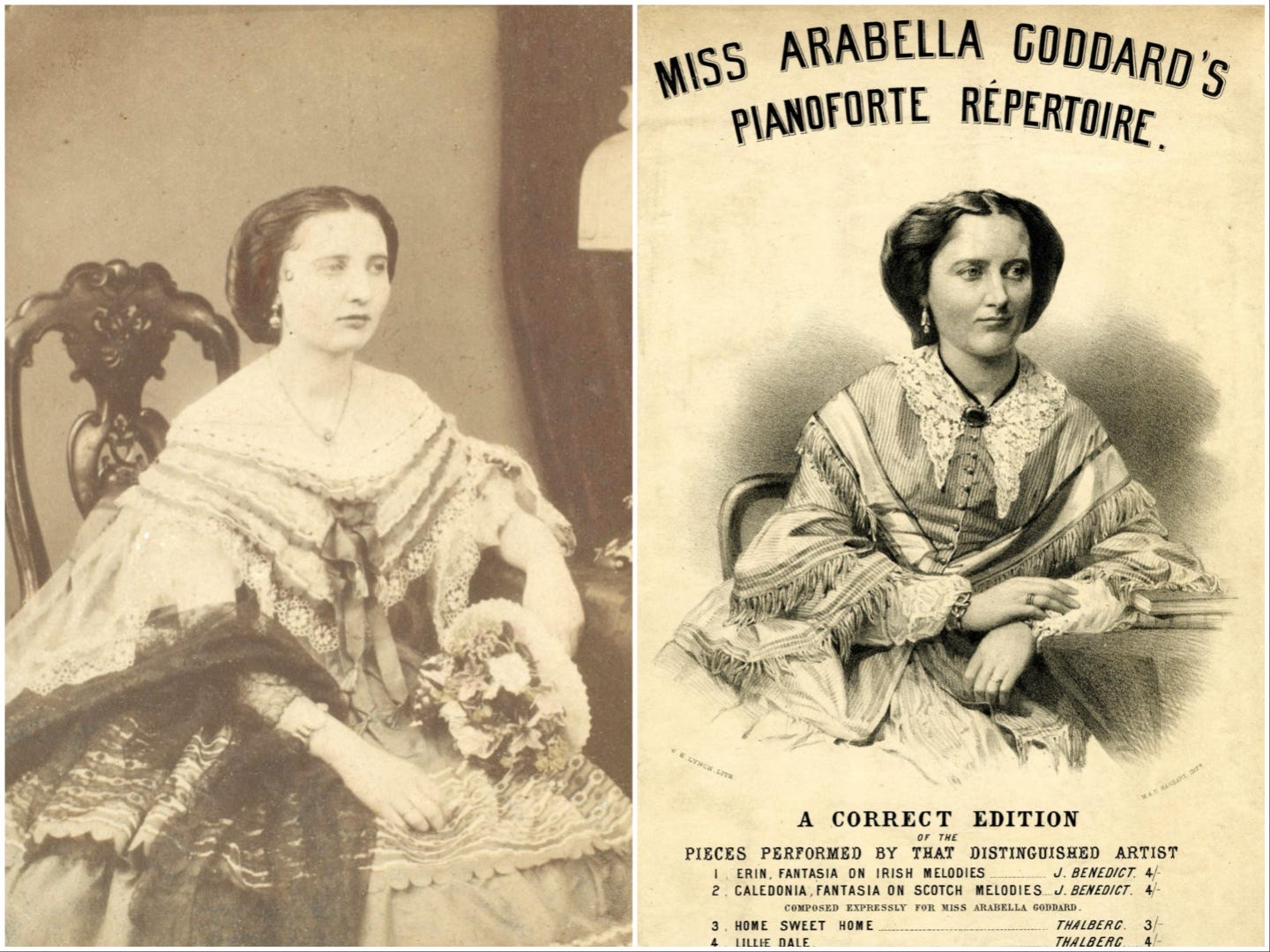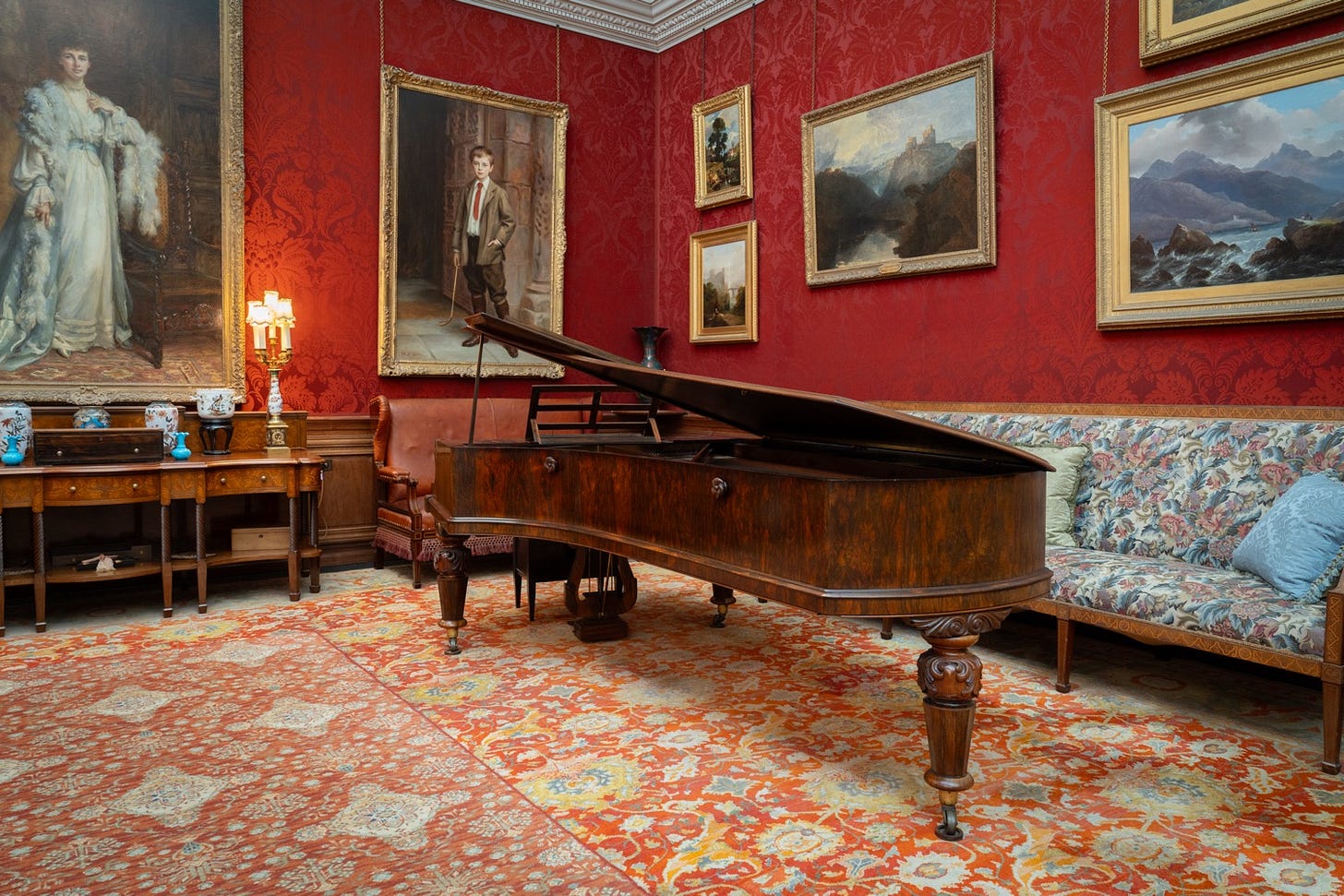Piano that went round the world returns to Cragside
Lord Armstrong’s piano is back in place at its Northumberland home with a remarkable story to tell. Tony Henderson reports
Another chapter has played out in the astonishing story of a piano owned by inventor and industrialist Lord Armstrong.
The story begins with Victorian touring star pianist Arabella Goddard, who was hailed as a child prodigy and who performed in front of Queen Victoria at nine years old.
In 1872, she set sail on a world tour, taking her Broadwood grand piano with her.
But on the way to Australia, she was marooned off the coast of Queensland when the RMS Flintshire ran aground on the Great Barrier Reef.
Arabella spent a night in an open boat while the piano was left behind and became used as ballast to keep the ship afloat.
After she and her piano were recovered, she arrived in Sydney, but her agent fell out with the manager of the Victoria Theatre over a shared billing with a local ‘Burlesque Opera’ performer.
The refusal to share the stage was made public by a letter, supposedly written by Arabella, which mocked Australian performers and audiences.
Arabella denied authorship but had to flee Sydney, leaving the piano behind. It was held by the theatre manager for several months before negotiations secured its release.
The piano resurfaced in London in May 1875 and was purchased by William Armstrong for 250 guineas with a 15% discount – roughly £26,000 in today’s money.
It was transported to his Cragside home in Northumberland, where it was eventually showcased in the drawing room.
The piano remained at Cragside until at least 1901, but after that its whereabouts for over a century are unknown.
Then in 2006, the piano reappeared at an auction, where it was bought by a Sunderland couple for £85.
Under the piano’s lid was a label that reads ‘Sir Wm. Armstrong’ alongside pencilled dates, believed to show when it was tuned.
The couple have generously given the piano to the National Trust’s Cragside exactly 150 years after it was originally purchased by Armstrong. The piano has now been returned to the drawing room.
Claire Teasdale, collections and house manager at Cragside, said: “At the time of its purchase, William Armstrong was one of the richest men in the world.
“It’s possible that William Armstrong admired Arabella Goddard as a performer, and he may have intentionally chosen this piano for his home – just as iconic instruments once belonging to rock stars are sought after today.
“We’re really excited to bring it home to Cragside and share its remarkable story with visitors.”
Work to conservation-clean and tune the Broadwood grand piano is underway in preparation for pop-up performances during the festive season.
To make space for the new Broadwood piano, Cragside sold a grand piano through Newcastle auctioneers Anderson and Garland for £2,600.
This piano was given to the National Trust as a period-appropriate prop for use at any of their properties.
It was at Sizergh Castle in Cumbria for several years before being moved to Cragside in 1988. While it was not owned by Lord Armstrong, it is a good example of a Blüthner piano, and the sale proceeds will go towards the costs of the Broadwood conservation work.




